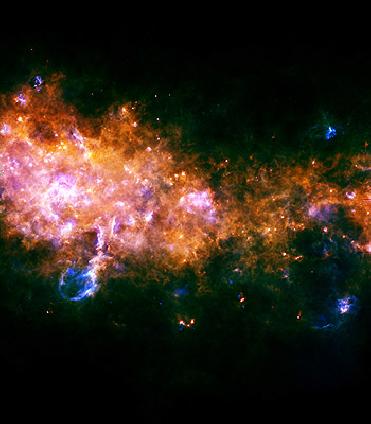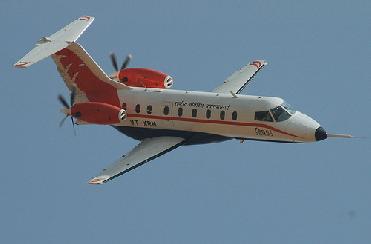
This image is taken looking towards a region of the Galaxy in the Eagle constellation, closer to the Galactic centre than our Sun. Here, we see the outstanding end-products of the stellar assembly line. At the centre and left of the image, the two massive star-forming regions G29.9 and W43 are clearly visible. ESA/Hi-GAL Consortium photo
NEW DELHI (BNS): The first scientific results from ESA’s Herschel infrared space observatory have revealed previously hidden details of star formation.
New images show thousands of distant galaxies furiously building stars and beautiful star-forming clouds draped across the Milky Way. One picture even catches an ‘impossible’ star in the act of formation.
Presented during a major scientific symposium held at ESA on Thursday, the results challenge old ideas of star birth and open new roads for future research.
Herschel’s observation of the star-forming cloud RCW 120 has revealed an embryonic star which looks set to turn into one of the biggest and brightest stars in our Galaxy within the next few hundred thousand years.
It already contains eight to ten times the mass of the Sun and is still surrounded by an additional 2000 solar masses of gas and dust from which it can feed further.
“This star can only grow bigger,” says Annie Zavagno, Laboratoire d’Astrophysique de Marseille. Massive stars are rare and short-lived. To catch one during formation presents a golden opportunity to solve a long-standing paradox in astronomy.
“According to our current understanding, you should not be able to form stars larger than eight solar masses,” said Dr Zavagno.
This is because the fierce light emitted by such large stars should blast away their birth clouds before any more mass can accumulate. But somehow they do form.
Many of these ‘impossible’ stars are already known, some containing up to 150 solar masses, but now that Herschel has seen one near the beginning of its life, astronomers can use the data to investigate how it is defying their theories.
Herschel is the largest astronomical telescope ever to be placed into space. The diameter of its main mirror is four times larger than any previous infrared space telescope and one and a half times larger than Hubble.
Using its unprecedented resolution and sensitivity, Herschel is conducting a census of star-forming regions in our Galaxy.
“Before Herschel, it was not clear how the material in the Milky Way came together in high enough densities and at sufficiently low temperatures to form stars,” says Sergio Molinari, Istituto di Fisica dello Spazio Interplanetario, Roma.
 Previous Article
Previous Article Next Article
Next Article













The Indian Air Force, in its flight trials evaluation report submitted before the Defence Ministry l..
view articleAn insight into the Medium Multi-Role Combat Aircraft competition...
view articleSky enthusiasts can now spot the International Space Station (ISS) commanded by Indian-American astr..
view article